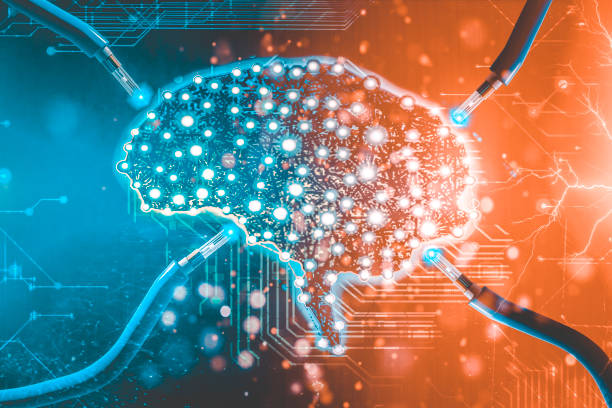What is Artificial Intelligence? Definitions and Basic Concepts

Artificial Intelligence (#ArtificialIntelligence) is a branch of computer science that deals with building machines that can perform tasks that usually require human intelligence.
These tasks include learning, problem-solving, pattern recognition, natural language understanding, and decision-making.
Artificial Intelligence seeks to build systems that can think, reason, and act.
This field is very broad and includes various techniques and approaches.
In fact, artificial intelligence tries to simulate human cognitive abilities in machines using algorithms and mathematical models.
The history of artificial intelligence dates back to the 1950s when scientists like Alan Turing and John McCarthy began exploring the idea of whether machines could think.
Since then, artificial intelligence has made remarkable progress and is now used in many fields, including medicine, finance, transportation, and manufacturing.
One of the main goals of artificial intelligence is to create systems that can learn and improve automatically without the need for reprogramming.
Artificial intelligence is not only limited to building humanoid robots, but also includes a wide range of software and hardware systems that can perform various tasks.
For example, recommendation systems used in online stores are a type of artificial intelligence that suggests products of interest to users by analyzing their behavior.
Also, face recognition and voice recognition systems are among the important applications of artificial intelligence.
Ultimately, the ultimate goal of artificial intelligence is to create machines that can help humans solve complex problems and make life easier for them.
Tired of losing customers due to poor e-commerce website design? With Rasaweb, solve this problem forever!
✅ Increase sales and visitor-to-customer conversion rates
✅ Smooth and engaging user experience for your customers⚡ Get a free consultation
Types of Artificial Intelligence: Approaches and Classifications

Artificial intelligence can be divided into various types based on capabilities and different approaches.
One of the most common classifications is dividing artificial intelligence into Narrow AI and General AI.
Narrow AI refers to systems that are designed to perform a specific task and perform very well in that area.
For example, a face recognition system or a smart chess game are examples of narrow AI.
These systems are only capable within their defined scope and cannot perform other tasks.
In contrast, General AI refers to systems that can do anything that a human can do.
This type of artificial intelligence is still in the research and development stages and has not been fully realized.
The goal of creating General AI is to build machines that can learn, reason, and make decisions in different situations.
General AI requires a high level of understanding and awareness that does not yet exist in machines.
In addition, artificial intelligence can also be classified based on the approaches used.
Some important approaches in artificial intelligence include Machine Learning, Neural Networks, Natural Language Processing, and Expert Systems.
Each of these approaches has its own advantages and disadvantages and is used to solve different problems.
For example, machine learning allows machines to learn from data and improve their performance without the need for reprogramming.
Neural networks are also designed inspired by the structure of the human brain and are used to solve complex problems such as pattern recognition and prediction.
Applications of Artificial Intelligence in Various Industries

Artificial intelligence is rapidly penetrating various industries and is having a significant impact on them.
In the field of medicine, artificial intelligence is used to diagnose diseases, develop drugs, and provide personalized care.
Artificial intelligence-based systems can analyze medical images with high accuracy and detect signs of disease.
Also, artificial intelligence can help scientists develop new drugs by analyzing genetic and biochemical data.
In the field of energy, artificial intelligence provides a better management system.
In the financial industry, artificial intelligence is used to detect fraud, manage risk, and provide automated financial services.
Artificial intelligence algorithms can identify suspicious patterns in financial transactions and prevent fraud.
Also, artificial intelligence can help banks and financial institutions manage financial risks by analyzing market data and predicting price changes.
Financial advisory robots also use artificial intelligence to help customers invest and plan their finances.
In the field of transportation, artificial intelligence is used to develop self-driving cars, improve traffic management, and optimize routes.
Self-driving cars use sensors and artificial intelligence algorithms to understand their surroundings and move safely without the need for a human driver.
Artificial intelligence-based traffic management systems can also reduce travel time and improve traffic flow by analyzing traffic data.
Finally, artificial intelligence can help drivers optimize routes by considering various factors such as traffic, weather, and road conditions.
| Industry | Application |
|---|---|
| Medicine | Disease Diagnosis, Drug Development |
| Finance | Fraud Detection, Risk Management |
| Transportation | Self-Driving Cars, Traffic Management |
Machine Learning and Its Role in Artificial Intelligence

Machine Learning is one of the main sub-branches of artificial intelligence that allows machines to learn from data and improve their performance without the need for reprogramming.
In fact, machine learning gives machines the ability to identify patterns and relationships in data and make predictions and decisions based on them.
This process involves the use of various algorithms that help machines learn from data and create predictive models.
Machine Learning can be divided into two general categories: Supervised Learning and Unsupervised Learning.
In Supervised Learning, the machine is trained using labeled data.
This means that each data has a specific label or output that helps the machine learn the relationship between input and output.
For example, in an image recognition system, labeled data includes images that are each accompanied by a specific label (such as “cat” or “dog”).
By analyzing this data, the machine learns how to classify new images based on their features.
In Unsupervised Learning, the machine is trained using unlabeled data.
In this case, the machine must automatically identify patterns and structures in the data.
For example, in a customer clustering system, the machine can divide customers into different groups by analyzing data related to customer purchasing behavior.
This type of learning is very useful for discovering hidden patterns in data and providing useful information for decision-making.
In addition to these two categories, Reinforcement Learning is also another important approach in machine learning, in which the machine receives a reward or punishment by performing various actions in an environment and learns how to make the best decisions based on them.
This method is very effective for training robots and automated systems.
Tired of your e-commerce website not generating as much revenue as its potential? Rasaweb, specializing in professional e-commerce website design, solves this problem forever!
✅ Increase sales rates and revenue
✅ High loading speed and unique user experience
⚡ Get a free e-commerce website design consultation
Neural Networks and Deep Learning
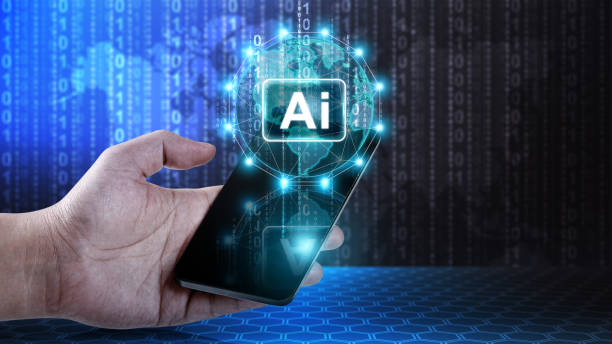
Neural Networks are computational models inspired by the structure of the human brain.
These networks consist of a large number of nodes (or neurons) that are connected to each other in different layers.
Each node receives an input signal, processes it, and generates an output signal.
The power of neural networks lies in their ability to learn complex patterns and perform various tasks such as image recognition, natural language processing, and prediction.
Neural networks are particularly effective in the field of Deep Learning.
Deep Learning is a sub-branch of machine learning that uses deep neural networks (networks with many layers) to analyze data.
These networks can learn complex patterns and different levels of abstraction in the data.
For example, in an image recognition system, a deep neural network can first detect edges and lines in the image, then combine these edges and lines to identify more complex shapes and patterns, and finally, based on these patterns, identify the object in the image.
Deep learning, due to its high ability to learn complex patterns, has performed very well in many fields such as image recognition, natural language processing, and voice recognition.
One of the main advantages of neural networks and deep learning is their ability to automatically learn features.
This means that the important features of the data do not need to be manually determined by humans.
Neural networks can automatically learn these features from the data.
This is especially useful in cases where the data is very complex and voluminous.
However, neural networks and deep learning require a large amount of data for training and may require a lot of time for training.
Also, interpreting deep learning models may be difficult because these models are very complex and understanding exactly how they make decisions may not be possible.
Natural Language Processing (NLP) and Machine Language Understanding
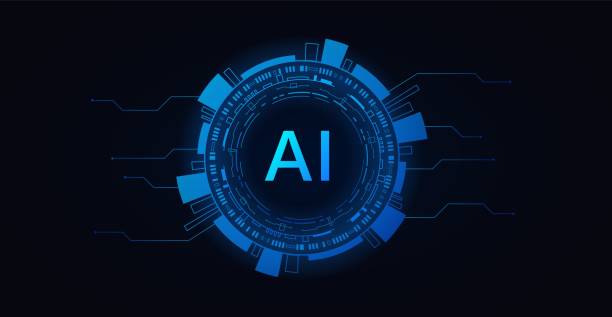
Natural Language Processing is a branch of artificial intelligence that allows machines to understand, interpret, and generate human language.
The main goal of NLP is to create systems that can communicate with humans in natural language and perform various tasks such as machine translation, sentiment analysis, question answering, and text generation.
NLP uses various techniques and algorithms to analyze the structure and meaning of language.
One of the main challenges in NLP is the ambiguity of language.
Human language is very complex and a word or sentence may have different meanings, depending on the text and context.
For example, the word “bank” can refer to a financial institution or a riverbank.
NLP systems must be able to detect these ambiguities and determine the correct meaning based on the text.
For this purpose, various techniques such as syntactic analysis, semantic analysis, and language models are used.
One of the important applications of NLP is machine translation.
Machine translation systems use NLP algorithms to translate text from one language to another.
These systems first analyze the text, understand its structure and meaning, and then generate the equivalent text in the target language.
Today’s machine translation systems have become very advanced and can provide high-quality translations.
Also, NLP is used in question answering systems.
These systems can analyze user questions, search for relevant information in the database, and provide an appropriate answer.
Question answering systems can be useful in various fields such as education, customer service, and information retrieval.
Finally, NLP is also used in text generation.
Text generation systems can generate new texts based on existing data and patterns.
These systems can be useful in various fields such as news generation, summary writing, and creating advertising content.
Challenges and Limitations of Artificial Intelligence
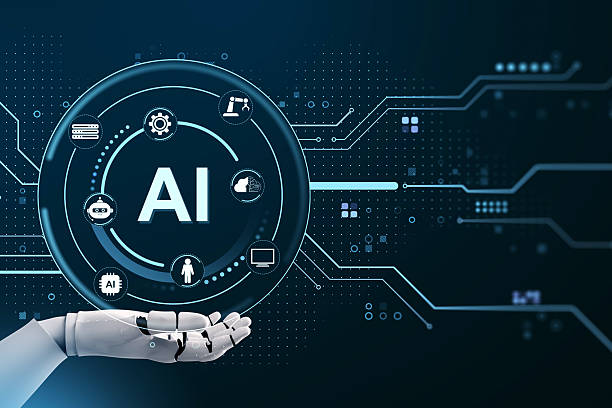
While artificial intelligence has made remarkable progress, it still faces many challenges and limitations.
One of the most important challenges is the need for a lot of data.
Many artificial intelligence algorithms, especially deep learning algorithms, require a large volume of data for training.
Collecting and preparing this data can be time-consuming and costly.
Also, the available data may have flaws and errors that can negatively affect the performance of the algorithms.
Another challenge is the Interpretability of artificial intelligence models.
Many artificial intelligence models, especially deep learning models, are very complex and understanding exactly how they make decisions may not be possible.
This can create problems in fields such as medicine and law, where it is necessary to fully understand the reasons for the decisions of a system.
For example, if an artificial intelligence system in a hospital decides that a patient needs surgery, doctors should be able to understand the reasons for this decision and ensure its accuracy.
In addition, Bias in data and algorithms is another important challenge.
If the data used to train an algorithm is biased, the algorithm will also be biased and may make unfair or incorrect decisions.
For example, if a face recognition system is trained using data that mostly includes images of white people, it may perform poorly in recognizing the faces of people of color.
To solve this problem, efforts should be made to ensure that the training data is diverse and unbiased and that the algorithms are designed to reduce bias.
Finally, ethical and social issues are also among the important challenges of artificial intelligence.
The use of artificial intelligence can have a profound impact on society and create issues such as job losses, privacy, and security.
To address these challenges, appropriate policies and regulations should be developed to ensure the responsible and ethical use of artificial intelligence.
| Challenge | Description |
|---|---|
| Need for a lot of data | Artificial intelligence algorithms require a large volume of data for training. |
| Interpretability | Understanding exactly how artificial intelligence models make decisions may not be possible. |
| Bias | Data and algorithms may be biased. |
The Future of Artificial Intelligence and the Outlook Ahead

The future of Artificial Intelligence is very bright and full of possibilities.
With the increasing advances in various fields such as machine learning, neural networks, and natural language processing, artificial intelligence is rapidly becoming a powerful and influential technology.
It is expected that in the future, artificial intelligence will play a more important role in daily life and various industries.
One of the areas where artificial intelligence is expected to have a big impact is Automation.
Artificial intelligence can automatically perform many repetitive and tedious tasks and allow humans to focus on more creative and strategic tasks.
This can lead to increased productivity and reduced costs.
In the field of medicine, artificial intelligence is expected to play an important role in diagnosing diseases, developing drugs, and providing personalized care.
Artificial intelligence-based systems can analyze medical images with high accuracy and detect signs of disease.
Also, artificial intelligence can help scientists develop new drugs by analyzing genetic and biochemical data.
In the field of transportation, self-driving cars are expected to be widely used to improve traffic and reduce accidents.
Self-driving cars use sensors and artificial intelligence algorithms to understand their surroundings and move safely without the need for a human driver.
In the field of education, personalized educational systems using artificial intelligence are expected to help students learn at their own pace and method.
These systems can identify students’ strengths and weaknesses and provide appropriate educational content.
Finally, artificial intelligence can play an important role in solving complex problems and providing innovative solutions.
Artificial intelligence systems can analyze data, identify patterns, and suggest new solutions.
This can be useful in various fields such as the environment, energy, and economics.
Do you have an e-commerce site but your sales are not as expected? Rasaweb solves your problem forever by designing professional e-commerce sites!
✅ Significant increase in conversion rates and sales
✅ Unique user experience for your customers
⚡ Click to get a free consultation with Rasaweb!
Ethical and Social Issues Related to Artificial Intelligence
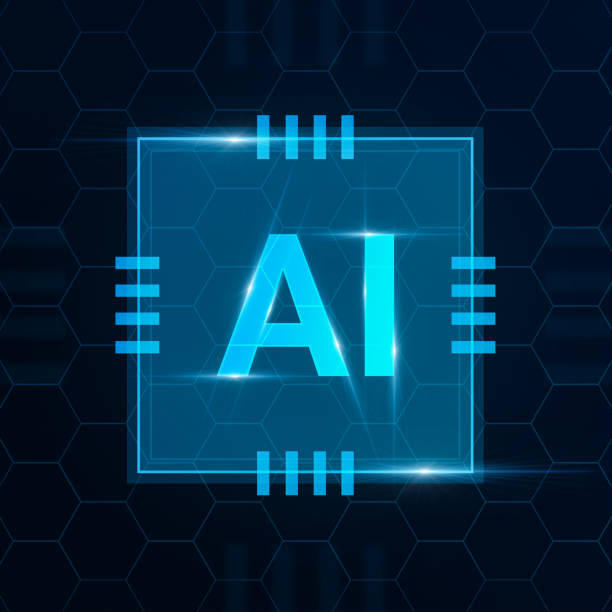
With the advancement of artificial intelligence, the ethical and social issues related to it become more important.
One of the most important issues is Accountability.
If an artificial intelligence system makes an incorrect decision or causes damage, who is responsible? Should the designers, manufacturers, or users of the system be held responsible? These questions still do not have clear answers and require further discussion and review.
Another issue is Transparency.
Many artificial intelligence models, especially deep learning models, are very complex and understanding exactly how they make decisions may not be possible.
This can create problems in fields such as law and where it is necessary to fully understand the reasons for the decisions of a system.
In addition, Privacy is another important issue.
Artificial intelligence systems require a lot of data to function optimally, and collecting this data can be a threat to people’s privacy.
For example, face recognition systems can automatically identify people’s faces in public places and collect information about them.
To protect people’s privacy, appropriate laws and regulations should be developed to prevent the unauthorized collection and use of data.
Also, Discrimination is another important issue.
If the data used to train an artificial intelligence algorithm is biased, the algorithm will also be biased and may make unfair or incorrect decisions.
To prevent discrimination, efforts should be made to ensure that the training data is diverse and unbiased and that the algorithms are designed to reduce bias.
Finally, Job Displacement is another concern related to artificial intelligence.
With the automation of many tasks by artificial intelligence systems, many jobs may be lost.
To address this challenge, appropriate training and empowerment programs should be developed so that people can learn new skills and transition to new jobs.
In general, the ethical and social issues related to artificial intelligence require serious discussion and review, and appropriate policies and regulations should be developed to ensure the responsible and ethical use of artificial intelligence.
How to Learn Artificial Intelligence? Learning Resources and Paths

Learning Artificial Intelligence can be an exciting and challenging journey.
Fortunately, there are many learning resources and paths for those interested in this field.
One of the best ways to start is to participate in Online Courses.
Websites such as Coursera, edX, and Udacity offer numerous courses in the field of artificial intelligence, machine learning, and deep learning.
These courses are usually taught by professors from reputable universities and include videos, exercises, and practical projects.
In addition to online courses, Books can also be a valuable resource for learning artificial intelligence.
There are many books in this field that fully explain basic and advanced concepts.
Some of the famous books in the field of artificial intelligence include “Artificial Intelligence A Modern Approach” by Stuart Russell and Peter Norvig and “Deep Learning” by Ian Goodfellow, Yoshua Bengio, and Aaron Courville.
Also, participating in Workshops and Conferences can also be a great way to learn artificial intelligence and connect with experts in the field.
In these workshops and conferences, you can learn about the latest advances and trends in artificial intelligence and exchange views with experts in this field.
Practical Projects also play an important role in learning artificial intelligence.
By doing practical projects, you can implement theoretical concepts in practice and improve your skills.
You can start with simple projects such as image recognition or price prediction and gradually do more complex projects.
Also, Free Online Resources can also be very helpful.
Websites such as TensorFlow, PyTorch, and scikit-learn provide comprehensive documentation and free tutorials for learning artificial intelligence.
Finally, Online Communities can also be a valuable resource for learning artificial intelligence.
In these communities, you can ask your questions, exchange views with other artificial intelligence enthusiasts, and learn from their experiences.
In general, learning artificial intelligence requires effort and perseverance, but with the use of appropriate learning resources and paths, you can succeed in this field.
Frequently Asked Questions
| Question | Answer |
|---|---|
| What is the definition of Artificial Intelligence (AI)? | It is a field in computer science that aims to create intelligent machines that can think, learn, solve problems, and make decisions like humans. |
| Mention some common applications of Artificial Intelligence. | They include self-driving cars, voice assistants (such as Siri and Alexa), recommendation systems (such as Netflix and Amazon), face recognition, and medical diagnosis. |
| What is the difference between Narrow Artificial Intelligence (ANI) and General Artificial Intelligence (AGI)? | Narrow Artificial Intelligence specializes in one specific task, while General Artificial Intelligence possesses human intellectual capacity to perform any cognitive task. |
| What is Machine Learning and its relation to Artificial Intelligence? | Machine learning is a branch of artificial intelligence that focuses on developing algorithms that allow systems to learn from data without explicit programming. |
| What are Artificial Neural Networks? | They are computational models inspired by the structure and function of the human brain, and are used in deep learning to process data and discover complex patterns. |
| Mention some ethical challenges related to Artificial Intelligence. | They include privacy issues, bias in data and algorithms, job loss, and responsibility in the event of errors or unfair decisions. |
| What is Natural Language Processing (NLP)? | It is a branch of artificial intelligence that focuses on enabling computers to understand, interpret, and generate human language in a useful and interactive way. |
| How can Artificial Intelligence affect the labor market? | It can lead to the automation of some routine tasks, which requires retraining workers and creating new jobs in the fields of designing, developing, and maintaining artificial intelligence systems. |
| What is Computer Vision? | It is a field in artificial intelligence that enables computers to “see,” understand, and interpret images and videos in the same way that humans do, enabling them to recognize objects and faces. |
| What is the importance of data in developing artificial intelligence systems? | Data is the fuel that feeds artificial intelligence systems, especially in machine learning. The quality and quantity of data greatly affect the accuracy and performance of models and their ability to learn and make correct decisions. |
And other advertising services of Rasa Web Advertising Agency
Intelligent Digital Advertising: An effective tool to increase click-through rates with the help of dedicated programming.
Intelligent Advertising Campaign: A new service to increase customer acquisition through marketing automation.
Intelligent Customer Journey Map: A creative platform to improve customer behavior analysis with a content strategy based on SEO.
Intelligent Marketing Automation: A combination of creativity and technology to increase click-through rates by designing an attractive user interface.
Intelligent Marketplace: An effective tool for managing campaigns with the help of dedicated programming.
And hundreds of other services in the field of internet advertising, advertising consulting, and organizational solutions
Internet Advertising | Advertising Strategy | Advertorial Report
Sources
What is Artificial Intelligence (AI)?
,What is Artificial Intelligence? – In simple language + types, applications and benefits
,10 Practical Applications of Artificial Intelligence in Various Industries
,16 Real-World Examples of Artificial Intelligence You Interact With Every Day
? With Rasaweb Afrin, take your business to the peak of success in the digital world. With comprehensive digital marketing services including dedicated website design, advanced SEO, and targeted advertising campaigns, we smooth the path for your growth.
📍 Tehran, Mirdamad Street, next to the Central Bank, Southern Kazerun Alley, Ramin Alley No. 6


